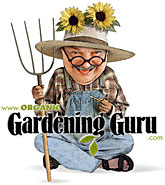A quickie, here, as it's already after eleven. But I did want to show off my kale harvest, centerpiece of tonight's veggies. I've been picking tiny leaves for salad for weeks, and had one other mid-size leaf harvest, but this is the first big collection of leaves eight to ten inches long–not counting the stems.
Snugged down in that collander where you can't see them are the dandelion greens, which I've chosen to reproduce in miniature, so you won't notice how out of focus the picture is.
Given how prevalent dandelions are, and how healthy, I've been trying to incoporate them into more of my cooking. I've got an excellent source just down the alley, where the weeds grow tall, which keeps the dandelions tender, I've found.
I harvest big ones by stripping them off their central ribs, so that what starts off looking like the leaf on the left, looks like the stip on the right, when I'm done with it. (I apologize for the florescent green in these photographs. If I stop to do somthing about it, I'll never get this posted.)
Back in the kitchen, I give the kale the same treatment the dandelions received in the field, stripping the tender leaves from the central ribs.
But in this case, I keep the ribs. Then I collect some chives, and snip some of the stems from young kale and arugula, where I've previously harvest the leaves for salad. This gives me a nice collection of crisp and tasty greens for my dish:
All of these get chopped, the small ones more finely than the kale ribs, which I chop into about quarter-inch bits.
Now it's time to turn on the frying pan. While it's heating, I put a few garlic cloves on a cutting board, lay the the flat side of a knife on them one or two at a time, and give them a good whack with the palm of my free hand. This is a trick my friend Sally (Hi, Sally!) showed me several years back. It breaks the paper sheath, so that instead of having to wrestle with the thing, you can just slip it off.
(When I'd expressed my awe and excitement over Sally's demonstration, she crowed, "Wow! I showed you a trick in the kitchen!" Which is ridiculous, as she's one of the best cooks I know, and does a whole lot of things I don't. Such as try new recipes.)
Now that the frying pan is hot, I put in a tablespoon or so of olive oil, add about a teaspoon each of cumin and mustard seeds. Mustard, in particular, gets very excited in hot oil and tends to bounce all over the kitchen, so I immediately scatter the chopped kale ribs over them. This does a pretty good job of keeping them in the pan.
Next, the garlic cloves go through the press and straight into the mixture; then the chopped chives and smaller stems. I give it a stir or two, and start chopping the leaves. I want these small enough to eat easily. That's the only criterion.
When they're chopped, they get stirred in, along with a sprinkling of salt and a bit of red pepper. Other Indian spices can also be used, but the dish is delicious even without them.
Last, I chop about one and a half tomatoes and add these. When the leaves are limp and the tomatoes hot, the dish is ready to serve.
This is my adaptation of a recipe from Neela Paniz's The Bombay Cafe, a terrific cookbook.

 Subscribe to RSS feed
Subscribe to RSS feed



It is always best to remove older, larger outer leaves and allow the center of the pant to continue producing. Kale will be good throughout the summer months, but especially good after a frost
Sounds great! I enjoy kale, maybe above all the dark leafies.
Yum, I love kale. Especially since it’s packed full of nutrition! The recipe sounds great. Did it take a long time for you to grow the kale?
That sounds quite delicious!
I love those greens combinations! would like to try this with a little tweak..my own version (add some of my fav greens)
Absolutely, Jean. I actually haven't found it better after a frost, but I'll pay more attention this year.
They are good, aren't they, Susan?
No, Karina,; kale is one of the quickest growing vegies out there. At least, somoe varieties are. Siberian and Russian both grow very quickly; dinosaur more slowly.
Okay, Judy, you got me; it was.
It is infinitely tweakable, Jonathan.
–Kate
I’m so excited about this recipe. I have been trying to move towards a greener diet. This sounds delicious. I will definitely have to try it since I love Kale.